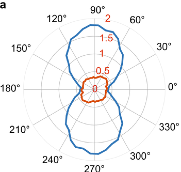Violation of Heisenberg’s uncertainty relation.
Experiments by Professor Yanhong Xiao and her research team at Fudan University in Shanghai show position and momentum measurement outcomes with a statistical uncertainty below the limits set by the famous Heisenberg uncertainty relation, ?x??p??/2.

According to Klaus Mølmer, who proposed the experiments and who is a co-author of the article [1], the work clarifies the interpretation of Heisenberg’s famous relation and holds potential for more precise measurements with quantum systems.
When we talk about quantum mechanical uncertainty, we are not talking about particles being spread out over a distribution of positions and velocities, but about how well we can predict the outcome of experiments. The quantum mechanical wave function provides probabilities for these outcomes and it is easy to show that the statistical uncertainties on position and momentum measurements obey the Heisenberg relation. But, a different formalism describes the situation, when we have access to results of measurements performed at later times, when we guess the unknown outcomes of previous measurements. Professor Xiao’s team thus measured values of ?x og ?p with a product as low as 0,34 ?, and there is no lower theoretical limit to the uncertainty product.
In addition to illuminating foundational aspects of the quantum formalism, the reduction of uncertainties in the experiments has applications in high precision measurements. The experiments were made with a gas of atomic particles the rotation of which in a magnetic field were measured with laser light. The same collaboration of researchers has demonstrated earlier this year [2] that the reduction of uncertainties in measurements of the mentioned rotation leads to a very precise determination of magnetic fields - with possible uses in bioscience and medicine.
[2] H Bao, Ji Duan, X Lu, P Li, i Qu, S Jin, M Wang, I Novikova, E Mikhailov, K-F Zhao, K Mølmer, H Shen, and Y Xiao, Measurements with prediction and retrodiction on the collective spin of 10^{11} atoms beat the standard quantum limit, Nature 581, 1591 (2020).
Explanation to the illustration: The blue and red curves show the measured variances of data around the predicted values for position measurements (horizonal direction) and momentum measurements (vertical direction) as well as linear combinations of the two quantities (other directions). The blue curve shows results based on standard predictions and obeys the Heisenberg uncertainty relation. The squeezing of the position variance below 0.5 is thus accompanied by an increased momentum uncertainty. The red curve, where the theoretical guess employs both earlier and later data, shows a reduced variance of both the position and momentum measurements and of any linear combination of these quantities.
